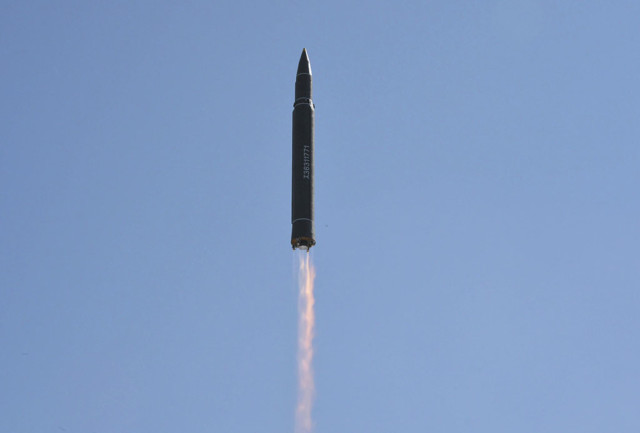The U.S. confirmed that the latest missile launch by Pyongyang was indeed an intercontinental ballistic missile. It’s the first such launch by the DPRK and it is bringing international condemnation.
CGTN’s Jim Spellman reports.
It appears to be the DPRK’s most successful missile launch to date.
DPRK’s state media calls it a successful test: “North Korea’s Academy of Defense Science has successfully test-fired the newly developed intercontinental ballistic missile.”
The DPRK calls it the Hwasong-14 and said the missile reached an altitude of about 2,800 kilometers and flew for about 40 minutes. It traveled a total of 933 kilometers from its launch site before landing in the waters off the coast of Japan.
DPRK’s neighbors, Japan and the Republic of Korea condemned the action.
“Japan has strongly protested against North Korea as we cannot accept its repeated acts of provocation,” Yoshihide Suga, Japan’s Chief Cabinet Secretary said.
Cho Hyun-gyu, the Seoul’s Joint Chief of Staff had stronger words: “If North Korea ignores our military’s warning and continues provocations, we clearly warn that Kim Jong-un’s regime will face destruction.”
The missile flew a steep trajectory. That ensured that it would travel a relatively short distance. Analysts are still working to calculate how far the Hwasong-14 could travel if fired at a lower angle, but it does appear this missile could hit the U.S. State of Alaska.
U.S. President Donald Trump tweeted: “Perhaps China will put a heavy move on North Korea and end this nonsense once and for all!”
Last week, Trump met with ROK president Moon Jae-In and vowed to solve the DPRK issue.
Western intelligence analysts remain skeptical of DPRK claims that it has miniaturized nuclear warheads small enough to be delivered by a missile like the Hwasong-14, but many predict that it’s just a matter of time before that becomes a reality.
 CGTN America
CGTN America
 This photo distributed by the North Korean government shows what was said to be the launch of a Hwasong-14 intercontinental ballistic missile, ICBM, in North Korea’s northwest, Tuesday, July 4, 2017. Independent journalists were not given access to cover the event depicted in this photo. North Korea claimed to have tested its first intercontinental ballistic missile in a launch Tuesday, a potential game-changing development in its push to militarily challenge Washington — but a declaration that conflicts with earlier South Korean and U.S. assessments that it had an intermediate range. (Korean Central News Agency/Korea News Service via AP)
This photo distributed by the North Korean government shows what was said to be the launch of a Hwasong-14 intercontinental ballistic missile, ICBM, in North Korea’s northwest, Tuesday, July 4, 2017. Independent journalists were not given access to cover the event depicted in this photo. North Korea claimed to have tested its first intercontinental ballistic missile in a launch Tuesday, a potential game-changing development in its push to militarily challenge Washington — but a declaration that conflicts with earlier South Korean and U.S. assessments that it had an intermediate range. (Korean Central News Agency/Korea News Service via AP)
